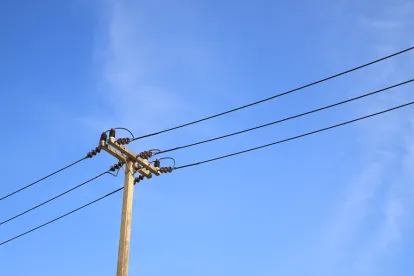In a decision released on February 19 that relied principally on rules of grammar, the Seventh Circuit held that to be an ATDS under the TCPA, a device must be capable of storing or producing telephone numbers using a random or sequential number generator, not merely capable of storing numbers. Gadelhak v. AT&T Services, Inc., No. 19-1738 (7th Cir. Feb. 19, 2020). As such, it affirmed the District Court’s decision (albeit based on a different interpretation of the TCPA) that granted summary judgment in favor of AT&T where AT&T’s customer management tool “dials numbers only from a customer database.” In so holding, the Seventh Circuit joined the Third Circuit’s and the Eleventh Circuit’s (which we blogged about here) narrow interpretation of ATDS and widened the split with the Ninth Circuit’s expansive interpretation. Compare Glasser v. Hilton Grand Vacations Co., 2020 WL 415811 (11th Cir. Jan. 27, 2020) & Dominguez v. Yahoo, Inc., 894 F.3d 116, 119 (3d Cir. 2018) with Marks v. Crunch San Diego, 904 F.3d 1041 (9th Cir. 2018).
The Seventh Circuit first addressed its subject matter jurisdiction in texting cases involving the TCPA. That issue, too, has created a Circuit split. Compare Melito v. Experian Mtkg. Sols., Inc., 923 F.3d 85, 92-93 (2d Cir. 2019) (receipt of a text message sufficiently concrete under Article III) & Van Patten v. Vertical Fitness Grp., LLC, 847 F.3d 1037, 1042-43 (9th Cir. 2017) (same) with Salcedo v. Hanna, 936 F.3d 1162, 1172 (11th Cir. 2019) (receipt of a single text message not sufficiently concrete under Article III). Relying on analogous common law claims for invasion of privacy and Congress’s ability to make that concrete harm cognizable, the court found that the receipt of an unwanted text creates a sufficiently concrete injury to satisfy Article III.
Assured of its jurisdiction, the Seventh Circuit next dispensed with the plaintiff’s argument that its analysis was constrained by its prior ruling in Blow v. Bijora, Inc., 855 F.3d 793 (7th Cir. 2017) or the FCC’s interpretations of the provision, reasoning that the D.C. Circuit’s decision in ACA International v. FCC, 885 F.3d 687, 695 (D.C. Cir. 2018) wiped the slate clean: “We therefore interpret the statute’s text as though for the first time.”
The Court then went on to analyze the language of §227(b)(1), which defines ATDS as “equipment which has the capacity—(A) to store or produce telephone numbers to be called, using a random or sequential number generator; and (B) to dial such numbers.” 47 U.S.C. §227(b)(1). In doing so, the Court focused on grammatical aspects of the statute rather than analyzing substantive law. Framing the issue in terms of deciding what “using a random or sequential number” modifies, the Seventh Circuit discussed four possible readings of the statute.
The first reading interpreted “using a random or sequential number generator” as modifying both store and produce. Under this interpretation (adopted by the Third and Eleventh Circuits), “a device must be capable of performing at least one of those functions using a random or sequential number generator” to qualify as ATDS.
A second reading, the one adopted by District Court, interpreted the phrase “using a random or sequential number” as modifying the “telephone numbers themselves,” capturing “only equipment that dials randomly or sequentially generated numbers.” Id. The Seventh Circuit stated that to make this interpretation viable, it would need to insert the word “generated” into the statute. Because Congress did not write such word in the statute, the Seventh Circuit rejected this interpretation.
A third reading (the reading by the Ninth Circuit advocated by the plaintiff) was that the phrase “using a random or sequential number” modified only the word produce, thereby capturing any equipment that could store or dial numbers. The Seventh Circuit squarely rejected this reading due to grammatical structure, legislative intent, and policy based grounds—“it would create liability for every text message sent from an iPhone.”
A fourth reading was that “using a random or sequential number” under the statute “could describe the manner in which the telephone number are to be called, regardless of how they are stored, produced, or generated.” Finding this interpretation squarely unaddressed by lower courts, the Seventh Circuit concluded Congress’s placement of a comma before the modifier deliberately foreclosed such a reading.
Reaching its conclusion much the same way one is taught to approach the bar exam—eliminate the most incorrect options and settle for the least incorrect option as one’s response—the Seventh Circuit identified the first reading as “imperfect” but nevertheless the best reading because it “lack[ed] the more significant problems of the other three.” Specifically, the Court relied on placement of the comma before “using a random or sequential number generator” as Congress’ way of signaling that the modifier is meant to apply to the entire preceding clause, but also acknowledged that this reading leads to an interpretation of the word “store” that renders the term either highly technical or superfluous.
With the Seventh Circuit’s decision in Gadelhak widening the Circuit split on two TCPA issues (standing and ATDS), we may soon see another TCPA case before the Supreme Court to accompany the recently granted review of Barr, Att’y Gen., et al. v. Political Consultants, et al., 923 F.3d 159 (4th Cir. 2019).





 />i
/>i

